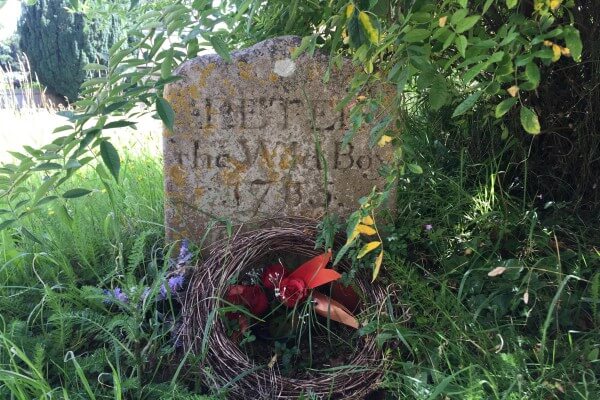A Wild Tale

How did a mysterious wild boy from Germany find his way to Northchurch?
In the churchyard at St Mary’s, Northchurch, is a gravestone with a rather unusual engraving. It simply says PETER the Wild Boy 1785.
So, who was Peter, and how did he come to be buried in a small Hertfordshire village?
His tale begins back in 1785 in Northern Germany, when a farmer discovered a boy wearing just the remnants of a shirt and foraging for fruit and acorns in a field near Hamelin – best known for its legend of the Pied Piper.
Here was another legend in the making as the boy, thought to be around 12 years old, walked on all fours, appeared unable to speak and instead grunted like an animal.
To the Royal Court in England, Peter was an intriguing mystery, and courtiers were under the romantic notion that he had been reared by wolves or bears in the wild.
Peter was brought to England by King George I, apparently at the request of Caroline, Princess of Wales, where he became a ‘human pet’ at Kensington Palace. The plan was to teach him how to talk, however poor Peter was unable to learn, although he was apparently adept at stealing kisses from the ladies and picking the pockets of courtiers!
Fast forward a couple of hundred years and the theory of a boy raised by wild animals was finally put to rest. In 2011, an analysis of a portrait of Peter, held at Kensington Palace, led to a rather less romantic possible diagnosis of Pitt-Hopkins, a chromosome abnormality that leads to an inability to learn to speak.
Back then, however, Peter became quite the celebrity for a time – there was a waxwork statue of him in the Strand in London and he was even invited to dine with the king. However, his lack of table manners did not go down well, and when his tutor, Dr Arbothnot, was unable to teach him, the court tired of their pet.
As a result, the Queen’s bedchamber woman, Mrs Tichbourne, arranged for Peter to be looked after by James Fenn, a farmer at Haxters End, with a fee of £35 a year for his trouble.
This was not the end of Peter’s celebrity – people would come to Berkhamsted to find him, and many writers including Daniel Defoe were inspired by his story. He even appears in two Charles Dickens’ novels.
Peter, who was prone to wandering, wore a brass collar bearing this inscription: ‘Peter, the Wild Man from Hanover. Whoever will bring him to Mr Fenn at Berkhamsted, Hertfordshire, shall be paid for their trouble’. The collar, which is now held at Berkhamsted School, was made after Peter managed to wander all the way to Norwich, where he was arrested as a Spanish spy!
When Mr Fenn died, Peter moved to Broadway Farm at Bourne End. He died there on 22 February 1785. It was estimated that he was around 75 years old.
Flowers are still placed on Peter’s grave from time to time – do you know who puts them there?
Do you have an interesting story about the history of Berkhamsted and surrounding villages that you would like to share? Email us at editorial@livingmags.info.

